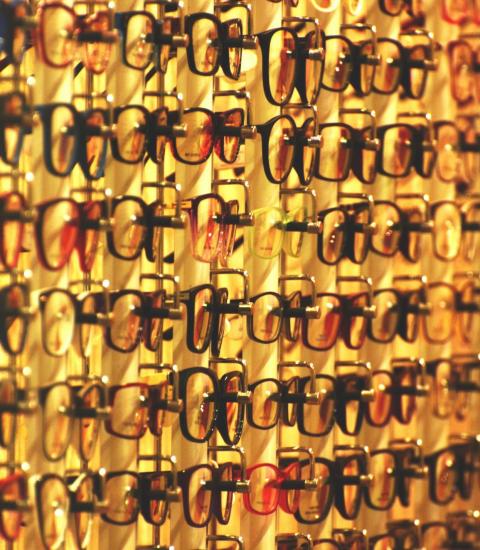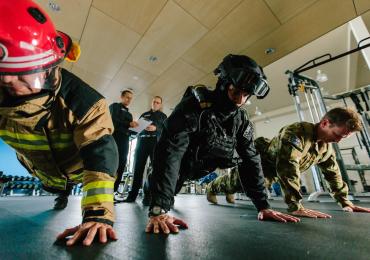
I’ve had city-folk look at me with a puzzled expression “A visual economist? I’ve never heard of that. Does that mean that you work with spreadsheets and how to display data on graphs?”
Even more puzzled has been the reply of rural-folk “A visual agronomist? Is that something to do with animals and their eyes?”
Others more familiar with “ergonomics” can still be confused: “Does that mean that you go into a workplace and just visually look at what might be wrong with the chairs and desks?”
Each of these interpretations has a certain element of truth.
Yes, I‘ve given advice in workplaces for how to display data so that it can be read and interpreted more easily.
Yes, I’ve given advice to veterinarians to wear eye protection when working with animals to reduce their risk of eye injuries from stray claws and hooves.
And sometimes I only need to take one glance around an office to see a bevy of uncomfortable people shielding their eyes from the overhead lights or sitting in awkward postures to view their computer monitors.
Visual ergonomics is much broader than these three examples and permeates many of the activities we engage in at work and at play.
What is visual ergonomics?
The aim of visual ergonomics is to get the balance correct between what we can see/perceive with our eyes and the visual demands of our work/play environment.
For example, it is a visual ergonomics problem if the numbers on a spreadsheet are too small for a worker to easily read. There are consequences for the visual comfort of the worker – they may go home from work each night with a headache or sore eyes. There are also potential financial and operational consequences for the workplace if the worker misreads the numbers on the spreadsheet.
Visual ergonomics encompasses the three domains of ergonomics as defined by the International Ergonomics Association (IEA), namely physical ergonomics, cognitive ergonomics and organizational ergonomics. Examples where visual ergonomics can be applied include lighting design, design of human-machine interfaces (HMI) in vehicles and on equipment, management of visual fatigue, vision corrections to enable people to see more clearly, assistive technology for people with vision impairment, and the design of the built environment (such as stairs and signage) to improve public safety, just to name a few.
Who works within visual ergonomics?
Professionals who work within visual ergonomics come from a variety of backgrounds including health (such as optometrists, ophthalmologists, medical practitioners, occupational therapists, physical therapists), psychology, computer science and the built environment (such as lighting designers, architects, engineers).
The unifying factor between these professionals is that they apply visual ergonomics theory, knowledge and methods to achieve a balance between the visual ability of people and the visual demands of their work/play environment. This can improve the performance, safety and comfort of individuals. It can also improve work system performance and safety.
A great conversation starter – and a challenge
Dentists, teachers and accountants have it somewhat easy when asked at a party “What do you do?” Most people are familiar with these occupations, so the answer “dentist”, “teacher” or “accountant” may be a sufficient answer to satisfy the enquirer.
Not so for a visual ergonomist.
This presents both an opportunity and a challenge.
“I’m a visual ergonomist” can be a great conversation starter. After laughing about the mental image of a visual agronomist fitting spectacles to a herd of cows in a paddock, a more descriptive (and accurate) explanation can be given to the enquirer. Visual ergonomics problems are widespread, and quite often conversations will turn to bad lighting at work, a hard-to-read interface in a vehicle, or eye fatigue from using a digital display.
The challenge for us, as a visual ergonomics profession, is increase awareness of visual ergonomics theory, knowledge and methods so that visual ergonomics problems are not built into systems, products or designs in the first place. If we have greater collective awareness, then poorly designed products and systems may be recognized as a visual ergonomics problem - not simply fuel for jokes and laughter during a party conversation.
More resources:
Here is an article suitable for use as a handout to explain visual ergonomics in plain English: “Visual ergonomics at work and leisure”1
A comprehensive definition of visual ergonomics and examples are given by the IEA Visual Ergonomics Technical Committee and in an editorial published in WORK “What is visual ergonomics?” 2.
Jennifer Long works as a visual ergonomist in Australia (www.visualergonomics.com.au)
References
1. Long J, Richter H. Visual ergonomics at work and leisure. Work. 2014;47(3):419-420.
2. Long J. What is visual ergonomics? Work. 2014;47:287-289.



